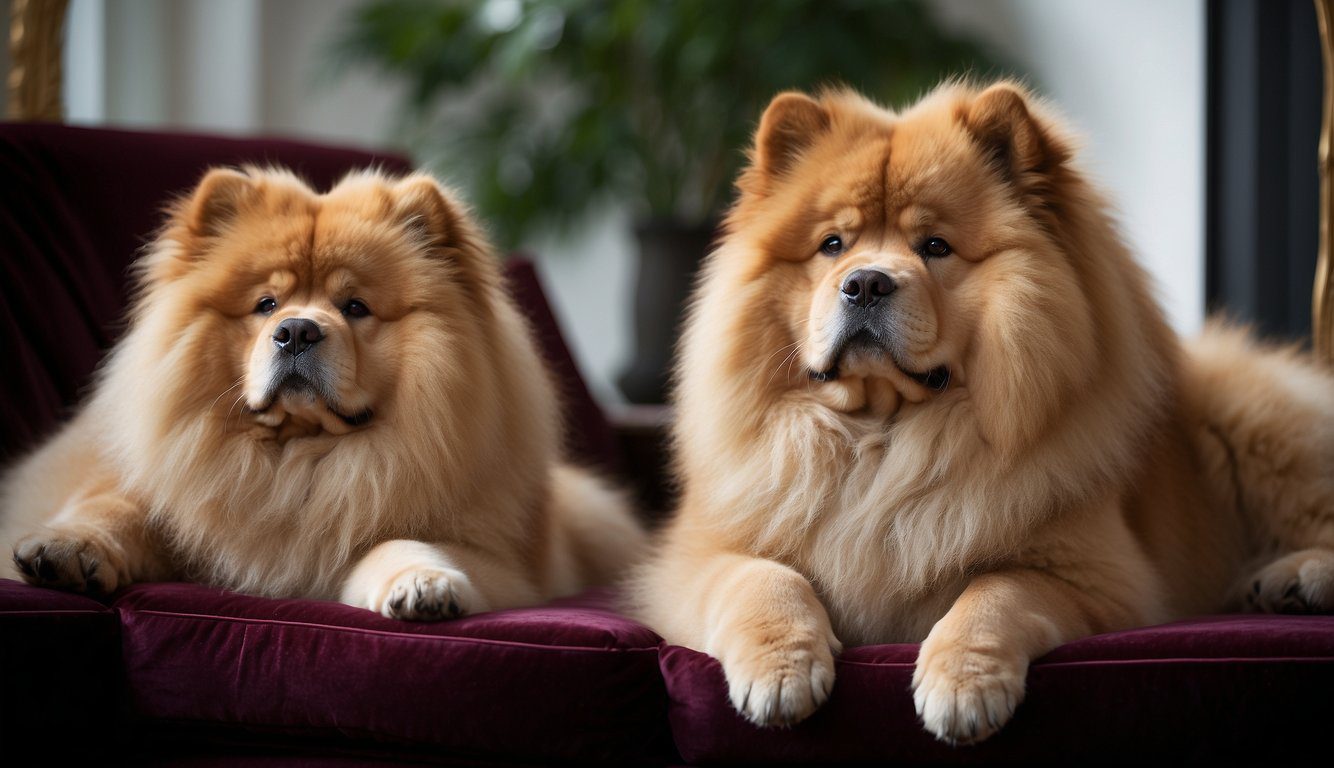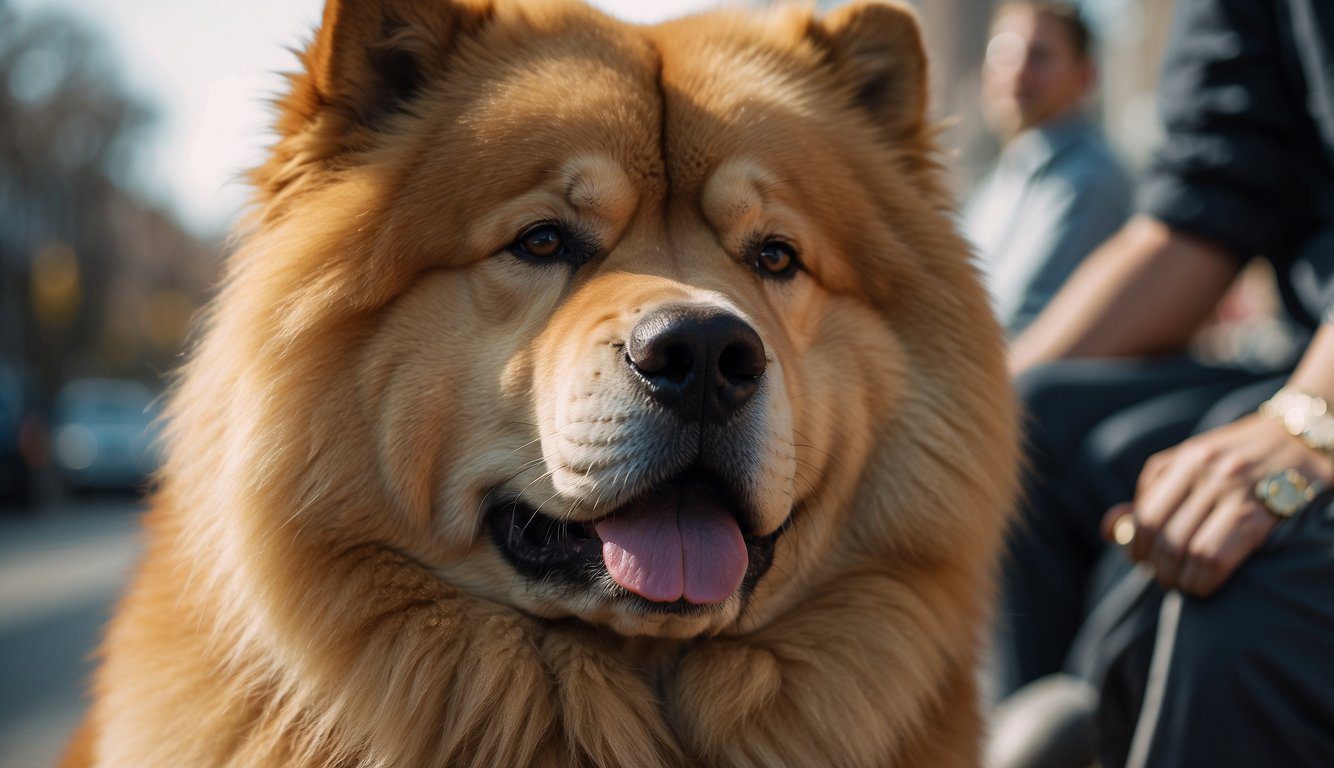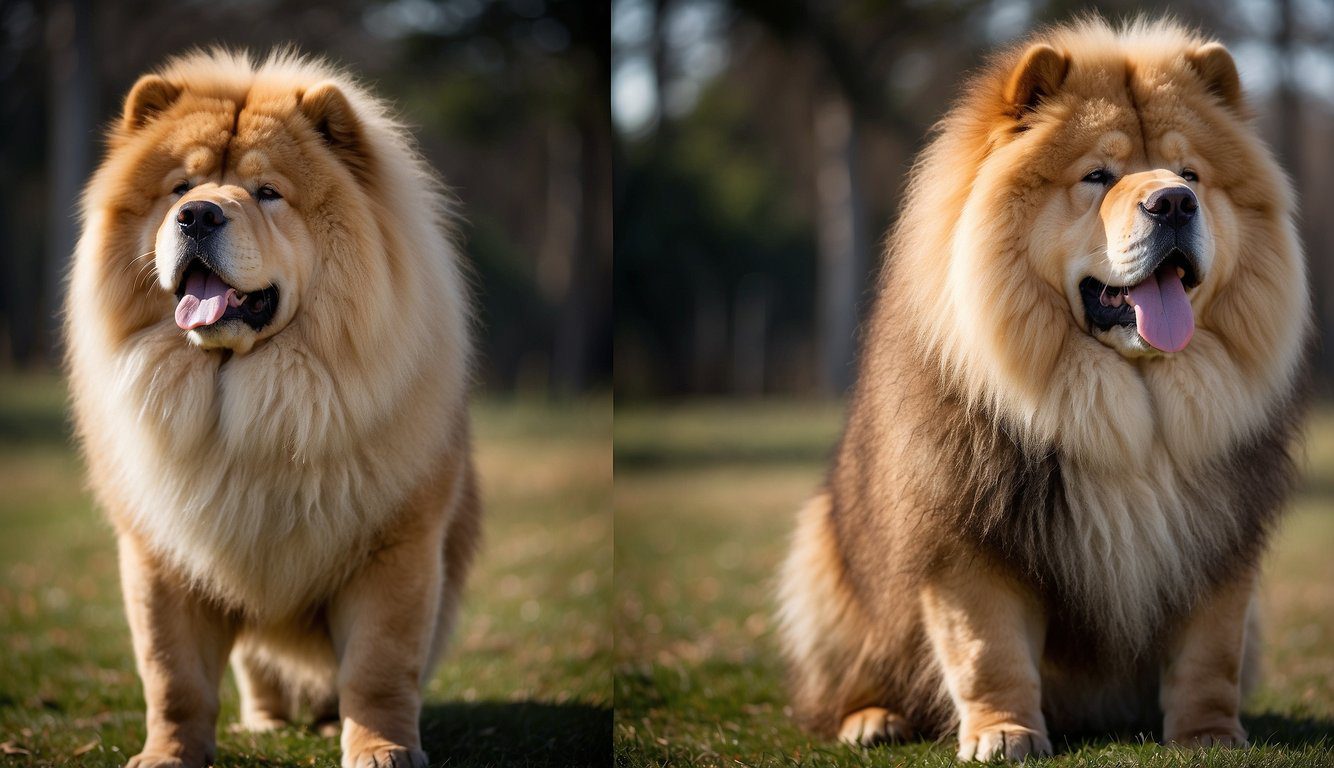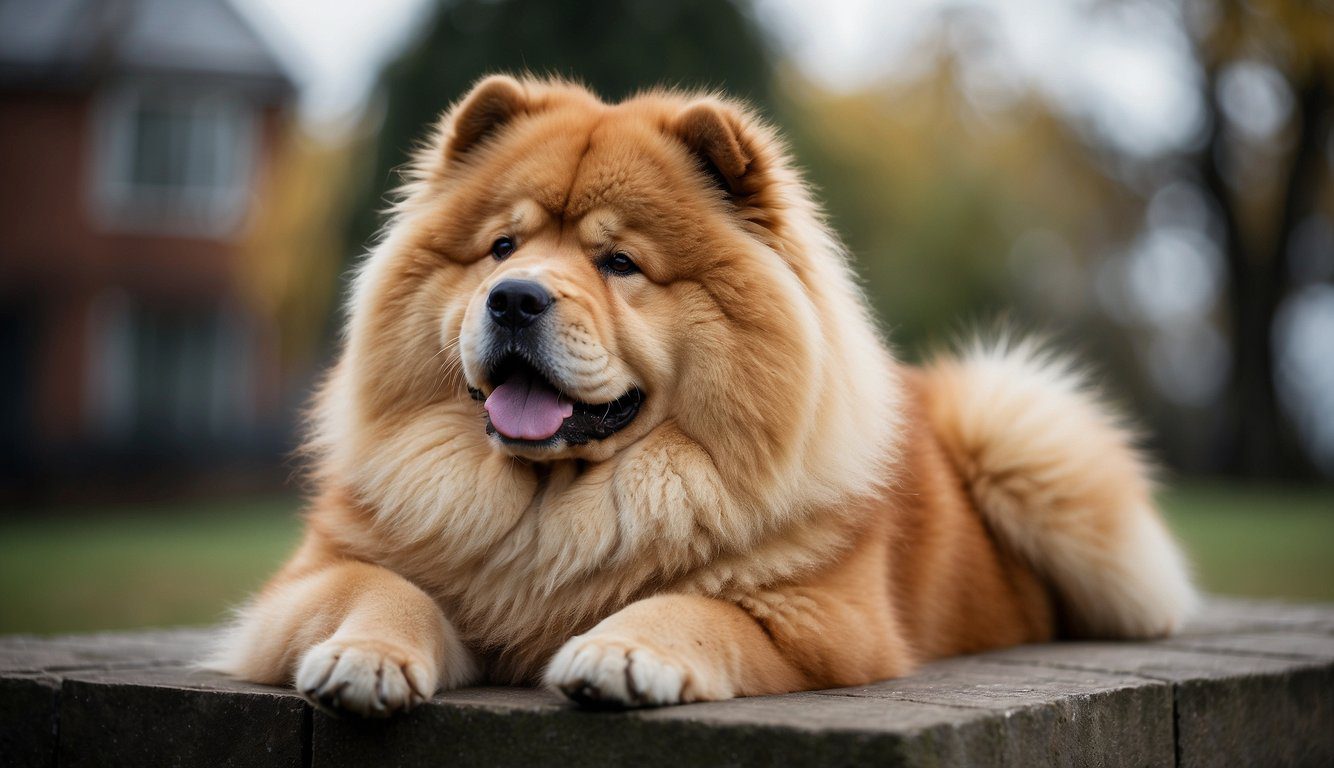What to Know
8 Surprising Secrets About Chow Chow dogs
When I first got my Chow Chow, I was drawn to their lion-like mane and dignified demeanor. These fluffy dogs are not only striking in appearance but also packed with unique traits that make them stand out. Many people don’t realize just how special Chow Chows can be beyond their furry looks.
If you’re living in the United States and thinking about getting a Chow Chow, or if you already have one, there’s a lot to learn and appreciate about this breed. Through this article, I hope to share some amazing facts that you may not know, which will deepen your understanding and love for these remarkable dogs.
1# Chow Chows have a blue-black tongue.
Did you know Chow Chows have a blue-black tongue? It’s one of the coolest things about them. I remember the first time I saw one and thought the pup had just eaten some blueberries!
Chow Chows are born with pink tongues. Around eight weeks, the color starts changing to blue-black. This unique trait is caused by high pigmentation in their mouths.
Chow Chows and Shar Peis are the only two dog breeds with completely blue-black tongues. If you look closely, they might even have spots or splotches.
Interestingly, this pigmentation is similar to what gives their skin its color. Caretakers at the London Zoo noticed this in the 1820s when Chow Chows were displayed as the “wild dogs of China” (https://www.akc.org/expert-advice/lifestyle/why-do-chow-chows-have-blue-tongues/).
2# The Breed is Over 2,000 Years Old
Did you know the Chow Chow breed has been around for more than 2,000 years? This ancient breed originated in China, making it one of the oldest dog breeds still in existence today. It’s fascinating to think about how these fluffy friends have been companions to humans for centuries.
When I first learned about the history of Chow Chows, I was amazed by how long they’ve been part of human history. They’ve been depicted in artifacts from as far back as the Han Dynasty, which dates back to 206 B.C. Imagine owning a dog breed with such a rich and storied past!
Some believe that the Chow Chow might have even come to China from the Arctic originally. This long history adds to the unique appeal of owning a Chow. It’s not just their adorable appearance, but their deep-rooted heritage that makes them special.
Many people don’t realize how much history these dogs carry with them. They were once imperial court dogs in China, and were also used as hunting dogs. Knowing this makes me appreciate them even more as loyal and dignified pets.
3# Chow Chows were originally bred as working dogs in China
Did you know that Chow Chows were originally bred as hardworking dogs in China? That’s right! These fluffy dogs weren’t just meant to look cute. They had jobs! Picture this: ancient Chinese people relied on their Chow Chows for all sorts of tasks.
Most notably, Chow Chows served as guard dogs. With their sturdy build and fierce demeanor, they were perfect for protecting homes and temples. Imagine walking up to a temple guarded by these majestic dogs!
Besides guarding, Chow Chows were also used for hunting and herding. Their strong bodies made them excellent in these roles. I’ve always been fascinated by old tales of Chow Chows pulling sleds. Yes, they were sled-pullers too, helping people navigate through harsh winter terrains.
The Chow Chow breed has always been versatile. From guarding property to pulling sleds, they adapted to their owners’ needs. They truly were an all-purpose working dog. It’s incredible to think how much history and tradition they carry with them.
4# Queen Victoria Owned a Chow Chow

Did you know Queen Victoria had a Chow Chow? Yes, she truly did! Queen Victoria, known for her love of dogs, was fascinated by the breed. These fluffy dogs quickly charmed her with their unique looks and loyal nature.
Queen Victoria’s fondness for Chow Chows helped them gain popularity in England. People admired the dogs she chose, and soon many wanted a Chow Chow of their own. Her admiration for the breed played a significant role in introducing these dogs to the Western world.
Imagine the sight at the royal palace with a Chow Chow walking through the grand halls! It’s not every day you hear about royalty and their pets. The bond between Queen Victoria and her fluffy companion is a perfect example of how pets can bring joy to our lives. If you’re curious to know more about the history and traits of Chow Chows, check out this detailed history of the breed.
5# “A Dog is the Only Thing on Earth That Loves You More Than He Loves Himself.” – Josh Billings

When Josh Billings said, “A dog is the only thing on earth that loves you more than he loves himself”, he must have had Chow Chows in mind. These fluffy dogs are known for their loyalty and deep affection towards their owners. I can clearly remember when my Chow Chow, Max, stuck by my side even during tough times.
Max showed unconditional love every day. Whether I was happy or sad, he was there with a wagging tail. This breed’s loyalty is unmatched, and it often feels like they truly love you more than themselves. There’s a special bond that forms when you own a Chow Chow, and it’s something you have to experience to believe.
This quote perfectly captures the essence of what it means to have a dog. Trust me, Chow Chows live up to this wisdom. Their selfless love is one of the reasons why they are such a cherished breed. If you’ve been pondering whether a Chow Chow is the right fit for you, remember this sentiment—it rings true in every wag of their tail.
6# Chow Chows Are Known for Their Lion-Like Mane

Have you ever noticed how a Chow Chow almost looks like a miniature lion? One of the breed’s standout features is its thick mane of fur around the neck, similar to a lion’s. This gives them an impressive and majestic appearance that turns heads wherever they go.
The fur around the neck and head is especially dense and fluffy. This fluffy mane is more pronounced in rough-coated Chows, which have a soft, wooly undercoat and a dense, coarse topcoat. If you look closely, you’ll see that the mane is fuller and thicker compared to the rest of their body fur.
When I first brought home my Chow Chow, Max, his mane was the first thing people commented on. They couldn’t help but reach out and touch his fluffy neck. Keeping that mane looking good does take some regular grooming, though.
Being diligent with brushing helps keep the fur free of mats and tangles. Invest in a good quality brush to handle the job. Regular grooming sessions can also be a great bonding time for you and your Chow.
7# They Need Regular Grooming to Manage Their Thick Fur

Chow Chows have an incredibly thick double coat. This fur needs frequent grooming to stay healthy.
I once had a friend with a Chow Chow, and she swore by weekly brushing sessions. Without regular grooming, their fur can get matted and tangled quickly.
To keep their coat in top shape, brush your Chow Chow at least once a week. Regular brushing helps distribute natural oils, promoting a shiny and healthy coat.
It’s also important to give them a thorough bath every six weeks. If you don’t bathe them often enough, their skin can become irritated.
After bathing, it’s crucial to dry their coat thoroughly.
Once, my friend’s Chow Chow had a bit of a skin issue because she didn’t dry him properly after a bath. Using a blow dryer on a low setting can help.
Regular brushing also keeps shedding under control, which is a big plus if you want to keep your house clean.
Don’t forget other grooming tasks like trimming their nails and brushing their teeth.
Clean their ears regularly to prevent infections. When their ears aren’t cleaned, dirt and debris can build up, which isn’t good for their health.
If you’re new to grooming a Chow Chow, there are plenty of resources online to help you.
8# Chow Chows Can Be Aloof with Strangers But Loyal to Their Families
Chow Chows have a reputation for being standoffish with new people. They can be quite reserved and don’t warm up to strangers quickly.
This doesn’t mean they aren’t affectionate; they’re just selective about who they show it to.
In my experience, my Chow Chow wouldn’t let anyone pet him without doing a “sniff test” first. It’s just part of their nature to be cautious.
They’re fiercely loyal to their family and will protect them at all costs.
Once you’ve earned a Chow Chow’s trust, you have a friend for life. They have an unwavering loyalty that makes them exceptional companions.
I remember one time, my dog stood between me and a stranger on our walk, clearly protecting me.
Training and socializing are key to managing their protective instincts.
Proper socialization from a young age can help them distinguish between friend and foe.
I found that introducing my dog to various people and environments helped a lot.
If you’re considering bringing a Chow Chow into your home, be prepared for their loyal but protective nature.
They’ll love you deeply but may take a while to warm up to your guests. With patience and the right training, they’ll be a loving and devoted part of your family.
Origins and History

Chow Chows have a rich history, deeply rooted in ancient China. Known for their distinctive lion-like appearance and blue-black tongue, these dogs were symbols of power and prestige throughout various Chinese dynasties.
Ancient Chinese Lineage
The Chow Chow is one of the oldest dog breeds in the world. Archaeological evidence shows that they have been around for more than 2,000 years.
Many believe this breed’s origins date back to the Han dynasty (206 BCE – 220 CE). These dogs were used in numerous roles including hunting, guarding, and even as working dogs pulling carts.
Their sturdy build and thick coat made them particularly suited for the harsh conditions of Northern China.
Interestingly, the genetic makeup of Chow Chows is closely related to that of the wolf. This gives them a unique place in the canine family tree.
Their loyalty and protective nature can be traced back to these early times. Did you know their distinct blue-black tongue sets them apart? No wonder they have always been a point of fascination.
Royal Connections
Chow Chows were not just everyday dogs; they had royal connections.
During the Tang dynasty (618-907 CE), Chinese emperors kept large kennels of these dogs. Emperors were known to own as many as 5,000 Chow Chows!
These dogs were treated with great respect and often depicted in art and pottery.
Their lion-like mane and dignified presence made them a symbol of nobility.
This royal connection didn’t end in China. When British merchants brought the breed to England in the late 18th century, they caught the eye of Queen Victoria. The fascination carried on, making Chow Chows popular among the English aristocracy.
Wouldn’t it be fascinating to have a pet with such a storied past?
Physical Characteristics
Chow Chows are known for their unique features that set them apart from other dog breeds. Their distinctive blue-black tongue and their varied coat types are particularly noteworthy.
Distinctive Blue-Black Tongue
One of the most striking features of a Chow Chow is its blue-black tongue.
When I first saw a Chow Chow’s tongue, I was genuinely amazed. Unlike most dogs that have pink tongues, the Chow Chow’s tongue is a deep blue-black color.
This unique trait often intrigues and surprises many new Chow Chow owners. Some believe the tongue is a sign of the breed’s ancient lineage.
Interestingly, this blue-black tongue is not just skin-deep. Even the inside of their mouths shares this unusual pigmentation.
Some scientists speculate that this unique tongue color might have been an evolutionary adaptation, though the exact reason remains a mystery.
Did you know other breeds like the Chinese Shar-Pei also share this trait, albeit not as prominently as the Chow Chow?
Unique Coat Types
Another distinctive feature of the Chow Chow is its luxurious coat, which comes in two types: rough and smooth.
I remember petting a friend’s rough-coated Chow, and it felt like running my hands through a plush carpet.
Rough-coated Chows have a dense, woolly undercoat with a straight, coarse topcoat that gives them a full, fluffy look. This thick coat can add to their lion-like appearance, making them look regal and imposing.
On the other hand, smooth-coated Chows have a shorter, sleeker coat but still maintain that dense undercoat.
Smooth-coated Chows are easier to groom because their fur doesn’t get tangled as easily.
Whether rough or smooth, keeping up with regular grooming is essential. Brushing their coats frequently helps manage shedding and keeps their skin healthy.
Behavior and Temperament

Chow Chows are known for their unique behavior and temperament. They are loyal but independent, often presenting specific challenges when it comes to training.
Loyal but Independent
Chow Chows are incredibly loyal to their owners. My Chow Chow, Max, would follow me around the house but still enjoyed his alone time.
Unlike some breeds that crave constant attention, Chow Chows value their independence.
They won’t be overly clingy, so don’t be surprised if they don’t demand a lot of cuddles. This can make them quite suitable for owners who appreciate a pet that doesn’t need constant interaction.
When I had guests over, Max would sit nearby, watching but keeping his distance. This aloof behavior is typical for the breed.
They are often wary of strangers, which can make them excellent watchdogs. However, this wariness also means socialization from a young age is crucial.
Meeting new people and other dogs helped Max become less aloof and more comfortable in social settings.
Regular walks in the park where he could encounter different scenarios really helped.
Training Challenges
Training a Chow Chow can be quite a task. Their stubborn nature often comes into play, making them less responsive to typical training methods.
I found that positive reinforcement worked best with Max.
Using treats and plenty of praise, I could get him to follow commands, but it took patience.
Consistency was key. Missing a training session even once could set back his progress.
Chow Chows don’t respond well to harsh punishments. It can make them even more stubborn and uncooperative.
I also discovered that short, frequent training sessions were more effective than longer ones.
Max had a short attention span, so keeping things brief but regular was the way to go. Having clear rules and a routine made training smoother for both of us.
FAQs

These questions cover crucial topics about Chow Chows, from their unique personality traits to their remarkable features. Whether you’re thinking about getting one or already have a fluffy friend, these answers will provide valuable insights.
What are the distinct personality traits of Chow Chows that potential owners should be aware of?
Chow Chows are known for their independent and reserved nature. They often bond closely with one person and can be aloof or wary of strangers. Early socialization is key to nurturing a more open temperament.
Can you list the variety of coat colors that Chow Chows come in?
Chow Chows sport a range of beautiful colors. They can be red, black, blue, cinnamon, or cream. Each color gives them a unique and regal appearance that makes them stand out at any dog park.
How does the size of a fully grown Chow Chow compare to an average adult human?
A full-grown Chow Chow typically weighs between 45 to 70 pounds and stands about 17 to 20 inches tall at the shoulder. They aren’t towering, but their sturdy and fluffy build makes them seem larger than life.
What are essential considerations to keep in mind when bringing a Chow Chow into your home for the first time?
Before bringing a Chow Chow home, make sure you have the time and patience for their grooming needs. They have thick double coats that need regular brushing. Also, understand that they may need early socialization and firm but gentle training.
What remarkable features make Chow Chows stand out from other dog breeds?
Chow Chows are famous for their blue-black tongues and lion-like manes. Their deep-set eyes and dignified expression give them an imposing and majestic look. It’s no wonder Queen Victoria was a fan of this breed.
In terms of disposition towards water, how do Chow Chows typically react?
Most Chow Chows aren’t fond of water. They might avoid swimming or getting wet whenever possible.
Be prepared for a bit of resistance when it comes to bath time. Plan accordingly to make the experience as stress-free as possible.

